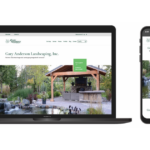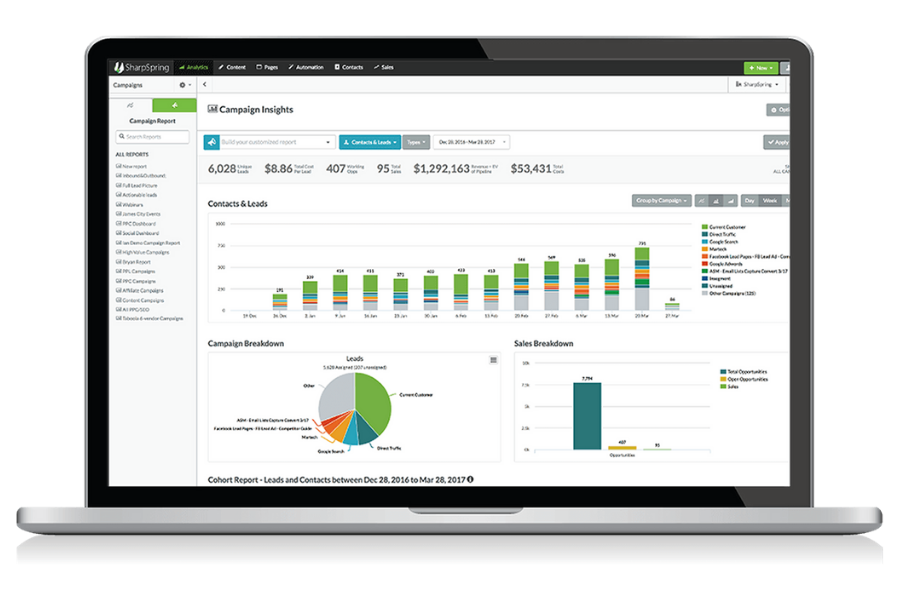What is email marketing?
Email marketing is just that, using an emailing platform to promote, educate, or advise an audience on your brand. The emails can be sent to a wide range and groups of individuals, such as a company newsletter to all your current contacts, a follow-up email to individuals you met at a tradeshow, or a thank you to current clients/customers with a special coupon.
While many companies use direct email marketing, there are specific components of an email marketing report that, when analyzed and applied correctly, can help to establish effective email marketing strategies.
What are email marketing KPIs?

The different parts of the email marketing report are considered key performance indicators or KPIs. There are multiple types of marketing KPIs to measure how marketing initiatives are performing that are used across different marketing channels, including social media and digital advertising, to name just a few. And, almost just as important, these reports typically describe how to improve the KPI next time.
In regards to the email marketing measurement, while there is tons of information that can be collected, there remains a few ‘key’ points that should be focused on when analyzing and creating effective email marketing.
Top Email Marketing KPIs
Below is the KPI list of the top seven email marketing KPIs:
1. Bounce Rate
A bounce rate is how many emails are unsuccessfully delivered to the recipient’s inbox. There are two types of bounce rates: a soft bounce and a hard bounce.
A soft bounce indicates that the recipient’s email is temporarily unavailable, which can be due to their server currently being down or their inbox is full. Soft bounces are minor issues, and oftentimes the system sending the email will automatically try to redeliver the message.
On the other hand, hard bounces represent a permanent error with the recipient’s email, which can be due to the email being blocked or a fake email address. When a hard bounce occurs, those contacts should be removed from your list because they negatively impact your company’s email reputation.
2. Open Rate
It is one thing to get your email delivered, it is another to have the recipient actually open the email. A primary factor that can affect open rate is how intriguing or catchy your subject line is.
Depending on the targeted audience, the subject line and description (the short blurb of what the email content is) should be carefully created so the recipient will want to open the email, thus increasing the email marketing engagement rate.
3. Conversion Rate
One aspect of the email marketing engagement rate is conversion rate, which is any action taken in response to the email, primarily associated with the call to action (CTA).
For example, if your email contains a special offer on a product and someone clicked on the “Buy Now” button in your email and then purchased that product on your website, that would be considered a “conversion”.
4. Clickthrough Rate
Another factor of email marketing engagement rate is clickthrough rate (CTR), which measures how many links your recipients clicked on in the email. This information provides an overall summary of how the email is performing by calculating if and how recipients interact with the email.
For example, it shows which links attract the most attention and which links may go untouched, shaping what information is desired by the targeted audience.
5. List Growth Rate
As your marketing strategies advance, you will want to keep track of your list growth rate, or the amount your contact list has grown. Since there is a “natural decay of your email marketing list, and it expires by about 22.5% every year,” it is critical to enact direct actions to sustain and increase your recipient list.
6. Unsubscribe and Spam Rates
When creating email marketing campaigns, there is always a risk of the recipient unsubscribing from your email list or the recipient or server marking your email as spam. When a recipient unsubscribes, you are losing that marketing contact, limiting your ability to communicate with them. In addition, spam reports will negatively impact your email reputation, similar to a hard bounce. To limit unsubscribes or spam flags, do not bombard your audience and always provide relevant content.
7. Overall ROI
In regards to ecommerce companies, the overall return on investment (ROI) can indicate the value of the email marketing strategies to generate leads or increase sales. Depending on the email’s objective, you can measure how the outcome impacted your revenue when divided by the total spend.
Make Your Marketing Emails Stand Out
Email marketing can be an effective tool when thoughtfully created and thoroughly analyzed. Tracking the above KPI list will develop a framework for effective email marketing strategies. It allows you to maximize your email marketing skills to ensure your company is creating and your recipients are receiving the most relevant content.
Use your KPI takeaways and improve your email’s performance by following these 10 email tips!







